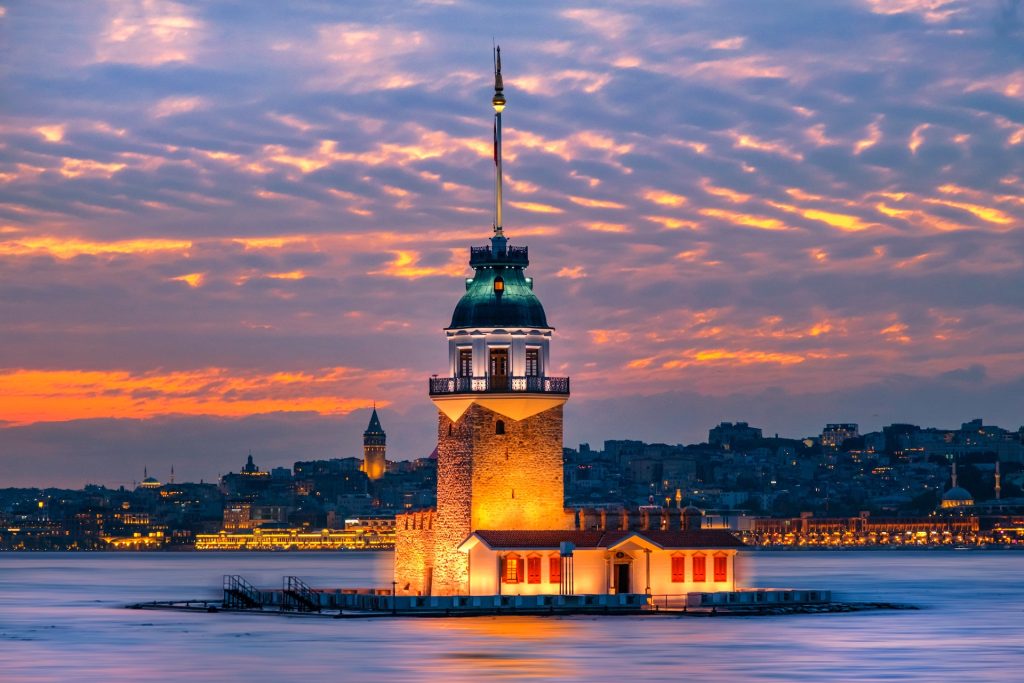Nestled at the entrance of the majestic Bosphorus strait in Istanbul, Turkey, the Maiden’s Tower (Turkish: Kız Kulesi) stands as a symbol of timelessness. This remarkable structure, also known as Leander’s Tower (Tower of Leandros) since the Byzantine era, has witnessed centuries of history, myth, and transformation. In this article, we embark on a journey to unravel the mysteries that enshroud this iconic edifice.
History of the Maiden’s Tower
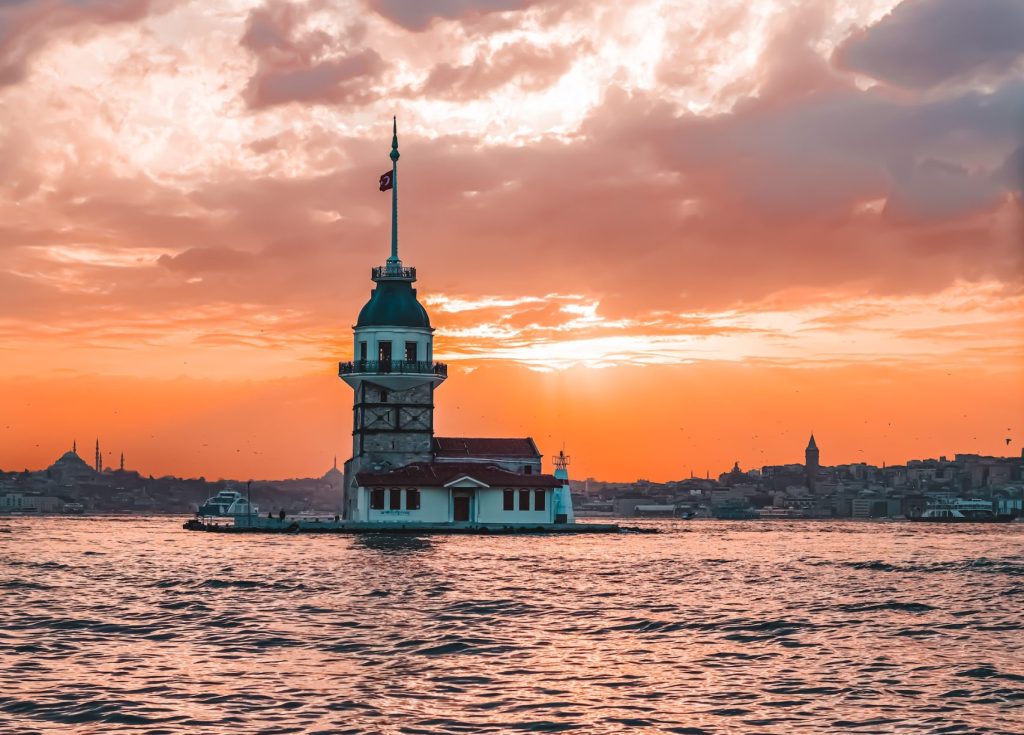
Our tale commences in 408 BC, following the naval triumph at Cyzicus. Athenian general Alcibiades constructed a custom station for ships from the Black Sea on a small rocky islet known as Arcla (translated as ‘small castle’) and Damialis (‘its calf’), located in front of what is now Üsküdar. This primitive structure laid the foundation for what would eventually become the Maiden’s Tower.
Byzantine Reinvention
Fast forward to 1110, Byzantine Emperor Alexius Comnenus took the helm of history by building a wooden tower, fortifying it with a stone wall. An iron chain extended from this tower to another on the European shore, in Constantinople’s Mangana quarter. This strategic link between continents provided a glimpse of the tower’s future significance.
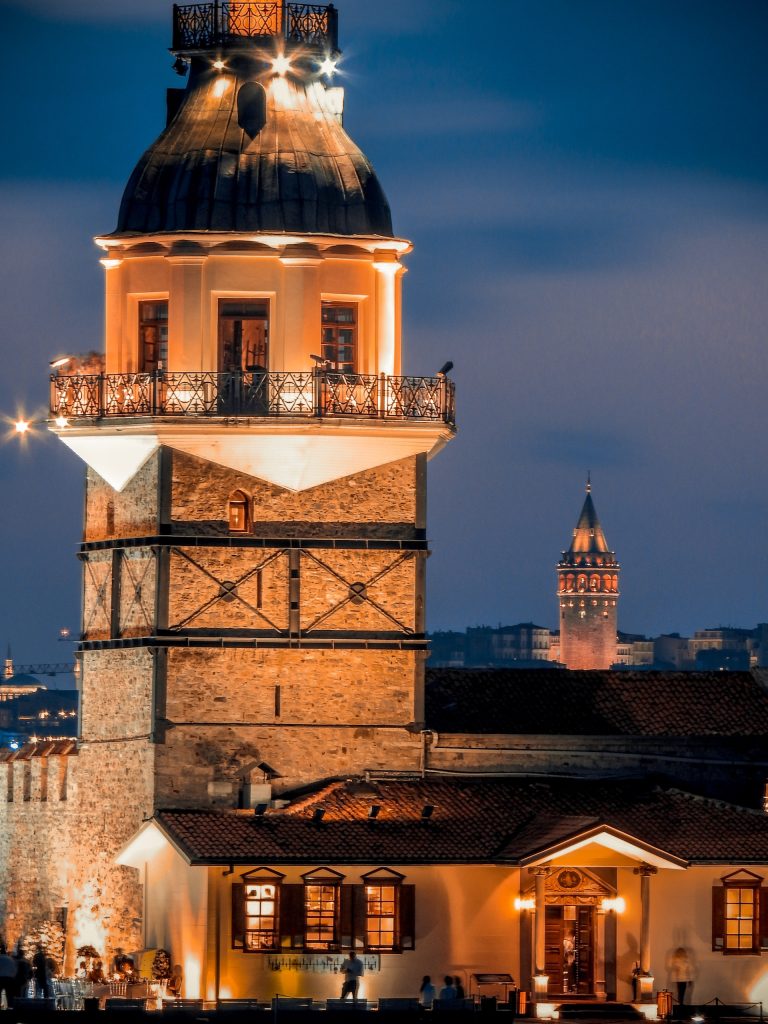
During the Ottoman conquest of Constantinople in 1453, the tower played a pivotal role, serving as a garrison commanded by Venetian Gabriele Trevisano. It transformed into a watchtower during the reign of Sultan Mehmed the Conqueror.
Trials and Triumphs
The passage of time brought both adversity and resilience to the Maiden’s Tower. In 1509, a devastating earthquake razed it to the ground, but it was reborn from its ashes. In 1721, fire consumed the tower, only to see it resurrected as a lighthouse following an order from grand vizier Damad Ibrahim Pasha.
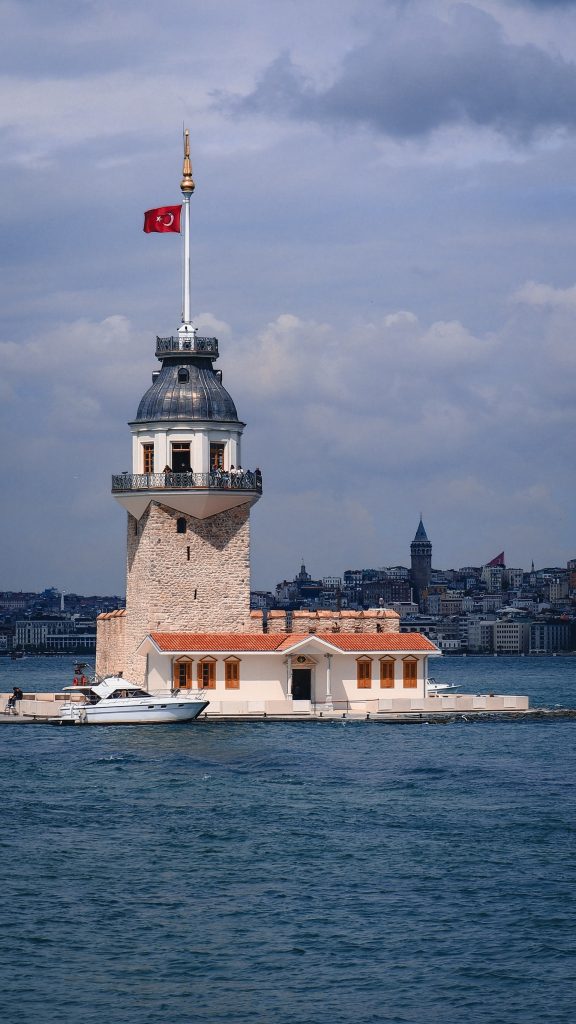
Subsequent years witnessed further reconstruction, with the tower being rebuilt in durable stone in 1763 and used as a quarantine station from 1829. Sultan Mahmud II undertook a comprehensive restoration in 1832, preserving its historical significance.
In the modern era, the tower found a place on the silver screen, making a memorable appearance in the James Bond movie “The World Is Not Enough.” However, it faced its greatest challenge in 1999 when an earthquake and tsunami struck the Sea of Marmara. Steel supports were added to fortify the tower’s structure, transforming its interior into a café and restaurant, offering breathtaking views of the former Roman, Byzantine, and Ottoman capital at Sarayburnu.
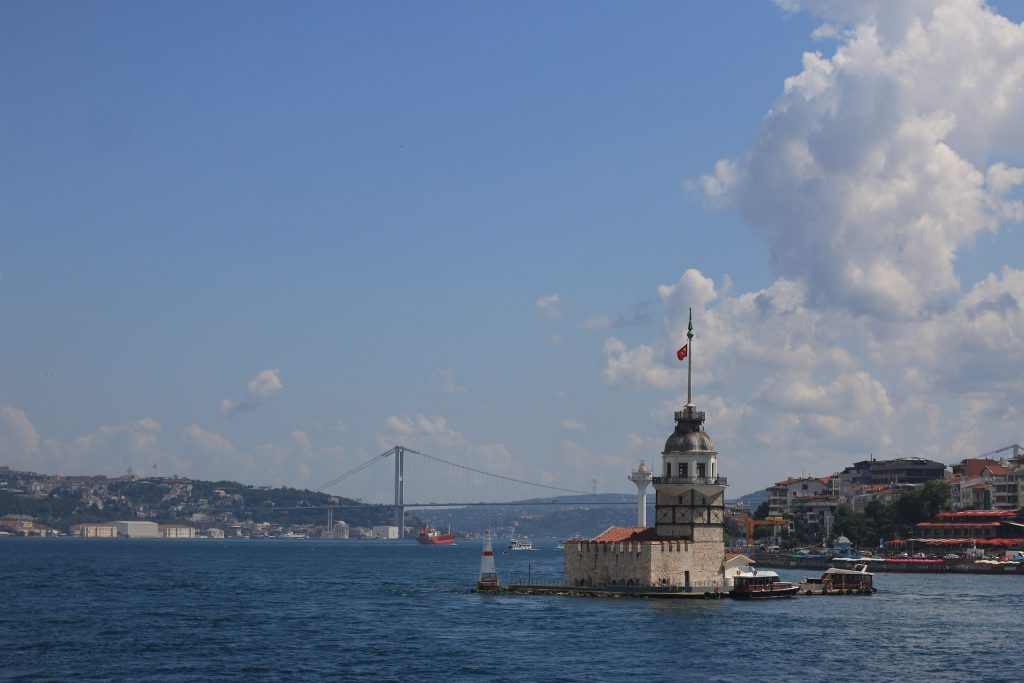
In 2021, extensive restoration efforts commenced, culminating in the tower’s grand reopening to the public in May 2023, ensuring its continued place in history.
Origins of the Name of the Maiden’s Tower
Although it is not known exactly where the name of the tower came from, there have been various stories about it. The most famous of these is the story of the emperor’s daughter. We’ll delve deeper into these stories in the following sections.
The Tragic Tale of the Emperor’s Daughter
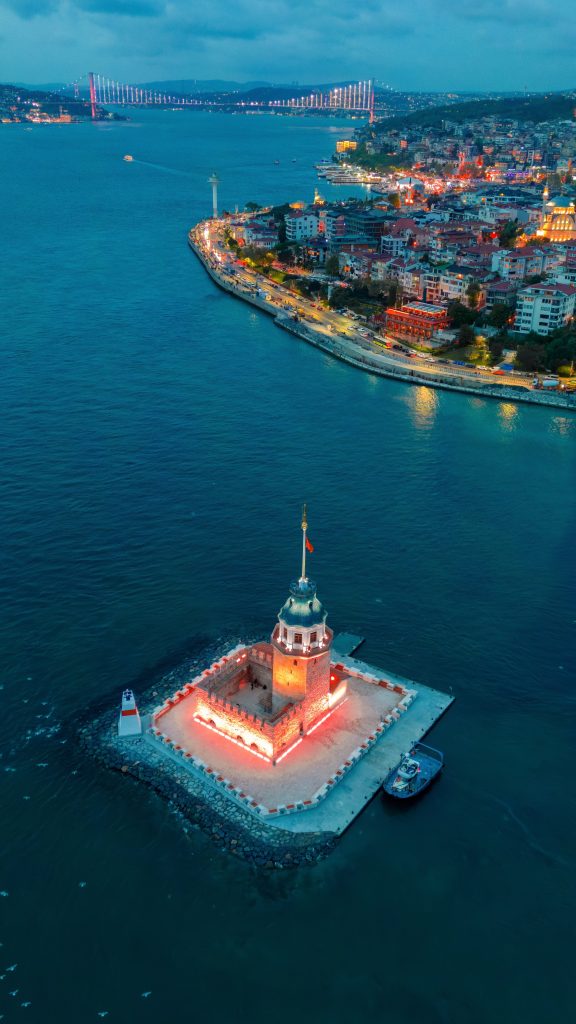
The Maiden’s Tower’s name carries an intriguing legend. An oracle once foretold the untimely demise of the emperor’s beloved daughter at the fangs of a venomous snake on her eighteenth birthday. To shield her from this grim fate, the emperor had the tower constructed in the Bosphorus, where she was confined to protect her from serpents. Her sole visitor was her father, who celebrated her eighteenth birthday with a basket of exotic fruits, convinced he had defied destiny. Tragically, an asp concealed amidst the fruits delivered the fatal bite, fulfilling the oracle’s prophecy, and bestowing the tower with its name: the Maiden’s Tower.
Leander’s Legacy
An alternate moniker, Leander’s Tower (Greek: Τουρ δε Λέανδρος; Latin: Tour de Léandros), finds its roots in the Greek myth of Hero and Leander. Hero, a priestess of Aphrodite, resided in a tower at Sestos near the Hellespont (Dardanelles). Leander, a young man from Abydos on the opposite shore, swam across the turbulent waters each night to be with his beloved. Hero guided his way with a lamp lit at the tower’s summit. The couple’s passionate love endured through a warm summer but met a tragic end during a stormy winter night when Leander lost his way, leading to their untimely demise. This tale, though associated with the Dardanelles, found resonance with the Maiden’s Tower due to its geographical similarities.
Conclusion
Although the tower has gained fame with its stories, its greatest legacy today is its historical structure. The tower, which carries the traces of three different civilizations and has undergone renovations dozens of times, is one of the most prominent historical structures of Istanbul today. The fact that it is located on an islet in the middle of the sea makes it different from other historical structures and more interesting.
